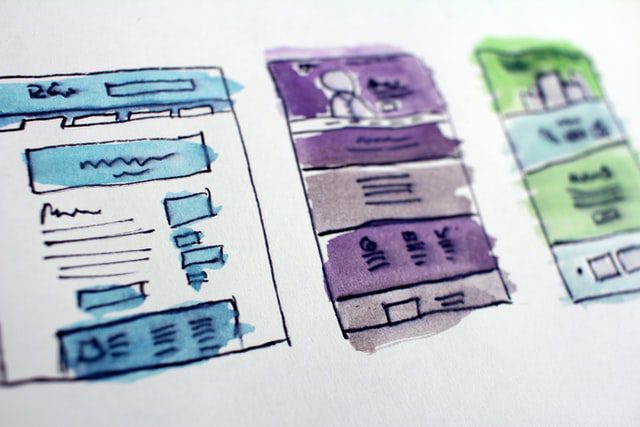Whether your business is a small startup or an enterprise, knowing your ideal customer base is essential. Your customers’ preferences influence the design of your website, along with your products or services. A customized website can help you differentiate your business from the competition and keep your customers in mind rather than blindly following the latest web design trends.
By digging into customer data, you can gather relevant information and understand the audience you’re designing your site for. If you’re interested in taking your website design to the next level, here are a few tips to consider implementing:
Analyze Demographics and Firmographics
Any data you have collected about your customers or clients can be valuable. It can provide a lot of insight into how to design your site. The best-customized websites are designed to serve customers as efficiently as possible.
Demographics such as age, gender, and geographic location are a great starting place to understand who your customers are. Firmographics, on the other hand, are similar to demographics but focused on organizational insights. Firmographics include data such as the number of employees within an organization, the business’s industry, and location.
Analyzing relevant data can give you insight into who is using your site and why they are coming to your site. Try looking at your website from your customers’ point of view while designing your site or making changes.
Pay Attention to Context and Behavioral Data
One of the most useful web design tips is to think about why someone lands on your site. What information do they need? Look at behavioral and contextual data. Both give you a better idea of what a customer is looking for and how your site is being used. Utilizing the data helps you create customized websites that work for your site visitors.
Behavioral data is what people do on your site. Glance at what they click on and how they navigate through the site. Customers might look at multiple product pages, read blog posts, or sign up for something.
Contextual data includes things such as how your customer got to your site. It also includes the device and browser they’re using. Did you know if someone has a negative experience using mobile browsing, they’re 62% less likely to make a purchase from your site? Lastly, review the number of new and returning site visitors.
Behavioral and contextual data can help your business see the bigger picture by understanding how your website can best serve your customers.
Know Your Ideal Customer or Client
Once you have data, think about who your ideal site visitor is. You can’t present a different site to every person who comes across your page. Great customized websites focus on serving the ideal customer. Having a comprehensive list of target customer profiles is key. Without an idea of who you’re serving, your business won’t have a clear direction.
Based on the data you’ve analyzed, you’ll have a good idea of what customers to target on your site. Create your website with the ideal customer in mind and think about which site visitors are converting into customers. Focus on customers clicking further into your site or signing up for your newsletter. Make sure there’s a decent volume of them to make customization worth the effort.
When building customized websites, make sure you’re choosing demographic or firmographic, behavioral, and contextual data that matters. Consider what industry you’re in and what will help your customers most.
Do you need to customize based on the primary location customers are from? Or should you capitalize on their age or a specific need? For B2B businesses, the same thing applies. For example, if you best serve small companies, target your website design and copy towards small companies to differentiate yourself.
Decide What Changes To Make

Building great customized websites doesn’t have to mean overhauling your site. Instead, start by changing a few pages around, adjusting your menu navigation options, or optimizing your homepage. It only takes visitors 0.05 seconds to decide whether to stay or leave your website. Make that first impression count!
For instance, say most of your site visitors are clicking through a few product pages before purchasing. Ensure your homepage works for them, place your products front and center, and highlight what’s new.
On the other hand, if they’re looking to learn something new from you, include recent blog posts on your homepage. Do visitors read your posts then fill out your contact form? Improve the user experience by placing contact form Call to Action (CTA) buttons at the end of posts.
Changes That Will Make an Impact
When making small changes across your site, go for changes that will make the biggest impact. 75% of people judge brand credibility on their impression of your website, so you need to make it a great experience for your customers. Here are our web design tips for making changes that will drive results.
Headers
When visitors land on your homepage or specific sales pages, what do they see? Write header copy that speaks to them. Choose a header image that they can identify with. Now that you’ve analyzed all your data, you should know exactly who is coming to your site. Your header should give them a reason to keep clicking around.
CTAs
Well-made customized websites will put CTA buttons where they matter most. Customize your CTAs based on what customers are looking for. This can be based on whether they’re a new or returning user, the size of their business, or their location. Decide what will work best for you based on your industry and your customer or client needs.
Navigation
If people land on your site looking for a specific product or service, make it easy to find. If customers really like reading your blog, keep it on your navigation menu rather than in your footer. If you rely on lead generation, keep a “contact us” button on the top of your page, rather than below the homepage fold.
If you’re getting a lot of visitors from search engines, simplify navigation with customized landing pages. If you notice a lot of customers finding a product from a certain search term, make sure that’s where they land when they click through to your site. This page can highlight any offers that will work great for them. This strategy tends to increase conversions.
Web Design Tips To Make You Stand Out
Following these tips, you’ll be able to create customized websites that give your customers what they want. Best Web Design Companies can help you find an agency or designer who can help bring your website to the next level. Check out our blog for more great web design tips.

